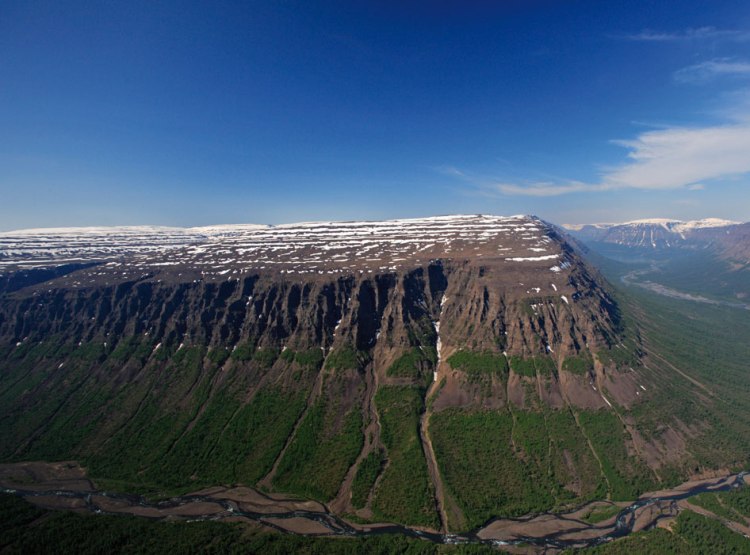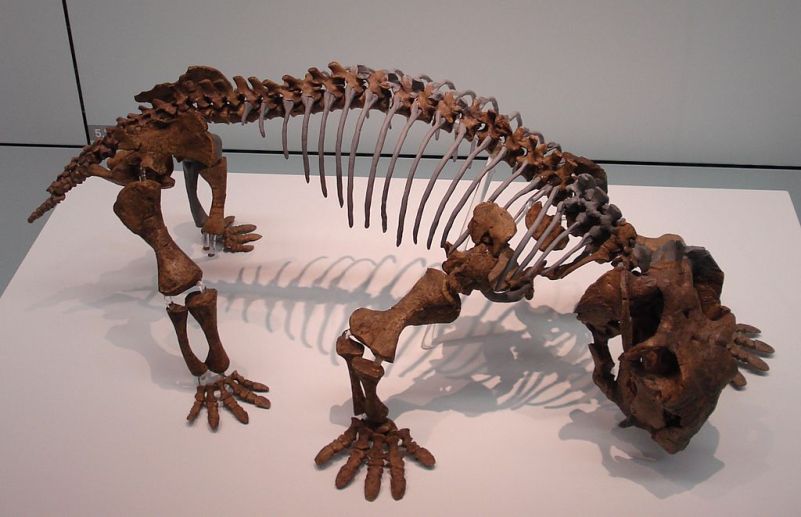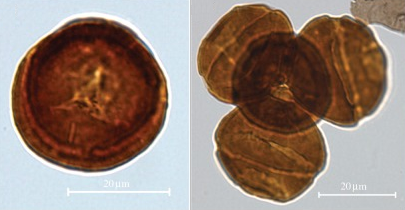There are three basic states for Earth climate: Icehouse, Greenhouse (subdivided into Cool and Warm states), and Hothouse (Kidder & Worsley, 2010). The “Hothouse” condition is relatively short-lived and is consequence from the release of anomalously large inputs of CO2 into the atmosphere during the formation of Large Igneous Provinces (LIPs), when atmospheric CO2 concentrations may rise above 16 times (4,800 ppmv), while the “Icehouse” is characterized by polar ice, with alternating glacial–interglacial episodes in response to orbital forcing. The ‘Cool Greenhouse” displays some polar ice and alpine glaciers, with global average temperatures between 21° and 24°C. Finally, the ‘Warm Greenhouse’ lacked of any polar ice, and global average temperatures might have ranged from 24° to 30°C.
The rifting of Pangea during the Mesozoic modified the paleoposition and shoreline configuration of the land masses and generated huge epicontinental seas. This altered significantly the oceanic circulation and caused profound consequences for paleoclimates and for the evolution of life.

Siberian flood-basalt flows in Putorana, Taymyr Peninsula.(From Earth science: Lethal volcanism, Paul B. Wignall, 2011, Nature 477, 285–286 )
During the Late Permian, massive volcanic eruptions in Siberia covered more than 2 millions of km 2 with lava flows, releasing more carbon in the atmosphere and high amounts of fluorine and chlorine increasing the climatic instability, which means that the Mesozoic began under extreme hothouse conditions.
The Early Triassic transition is marked by a moderate oxygen depletion and by mass extinction of glossopterids, gigantopterids, tree lycopsids and cordaites, as major contributors to coal deposits in the southern hemisphere. That was accompanied by unusually anoxic swamp soils (Retallack, 2013). The rifting of Gondwana began during the Early Triassic with the opening of the Indian Ocean and the separation of India and Australia, that modified shoreline configuration and enhanced platform areas inducing intense marine biodiversification. It was suggested that during that time there was a moderate oxygen depletion that caused the low body size of the amphibian and reptilian life-forms found in those rocks.

Fossil of Lystrosaurus, one of the few survivors of the Late Permian shows a variety of adaptations to low oxygen atmosphere. It was by far the most common terrestrial vertebrate of the Early Triassic (Staatliches Museum für Naturkunde Stuttgart; from Wikimedia Commons).
By the Mid Triassic, global temperature was still high – between 20°C and 30°C – and the atmospheric CO2 began to increase. There are reported episodes of humid climate registered by fossil vertebrates from the Molteno Formation in South Africa, and from Los Rastros Formation in central western Argentina.
The Late Triassic is marked by a return to the hothouse condition of the Early Triassic, with two greenhouse crisis that may also have played a role in mass extinctions and long-term evolutionary trends (Retallack, 2013). The paleoclimate was a very arid with intense evaporation rate. Although there was at least one time of significant increase in rainfall known as the “Carnian Pluvial Event”, possibly related to the rifting of Pangea. Massive volcanic eruptions from a large region known as the Central Atlantic Magmatic Province (CAMP) release huge amounts of lava and gas, including carbon dioxide, sulfur and methane into the atmosphere which led to global warming and acidification of the oceans.

Light-microscope photographs of Classopollis pollen from the Late Triassic (Image adapted from Kürschner et al., 2013).
The End-Triassic Extinction is probably the least understood of the big five. Most mammal-like reptiles and large amphibians disappeared, as well as early dinosaur groups. In the oceans, this event eliminated conodonts and nearly annihilated corals, ammonites, brachiopods and bivalves. In the Southern Hemisphere, the vegetation turnover consisted in the replacement to Alisporites (corystosperm)-dominated assemblage to a Classopollis (cheirolepidiacean)-dominated one.
Most of scientists agree that the extinctions were caused by massive volcanic activity associated with the break-up of the super-continent Pangaea. Another theory is that a huge impact was the trigger of the extinction event. At least two craters impact were reported by the end of the Triassic. The Manicouagan Impact crater in the Côte-Nord region of Québec, Canada was caused by the impact of a 5km diameter asteroid, and it was suggested that could be part of a multiple impact event which also formed the Rochechouart crater in France, Saint Martin crater in Canada, Obolon crater in Ukraine, and the Red Wing crater in USA (Spray et al., 1998).
References:
Holz, M., Mesozoic paleogeography and paleoclimates – a discussion of the diverse greenhouse and hothouse conditions of an alien world, Journal of South American Earth Sciences (2015), doi: 10.1016/j.jsames.2015.01.001
Sellwood, B.W. & Valdes, P.J. 2006. Mesozoic climates: General circulation models and the rock Record. Sedimentary Geology 190:269–287.
Retallack, G.J. 2013. Permian and Triassic greenhouse crises. Gondwana Research 24:90–103.
Retallack, G.J. 2009. Greenhouse crises of the past 300 million years. Geological Society of America Bulletin, 121:1441–1455.

Pingback: Ecosystem instability in the Late Triassic and the early evolution of dinosaurs. | Letters from Gondwana.
Pingback: Scientists have accidentally found the oldest ever butterfly or moth fossils - StuntFM 97.3
Pingback: Scientists accidentally find the oldest ever butterfly or moth fossils | GoSouth
Pingback: Los científicos encuentran accidentalmente los fósiles más antiguos de mariposas o polillas | UNIVERSITAM
Pingback: Scientists have accidentally found the oldest ever butterfly or moth fossils | Geology Page